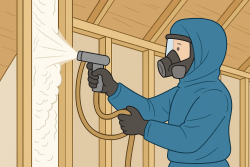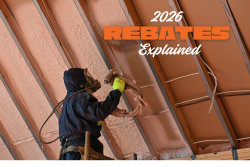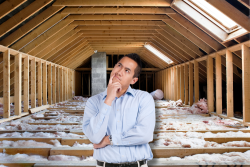When it comes to home maintenance, insulation might only sometimes be top of mind. Yet, it is pivotal in ensuring our homes are comfortable, energy-efficient, and safe. Over time, like many other aspects of our homes, insulation needs attention and sometimes replacement. You might want to reconsider that 25-year-old insulation lurking in your attic.
1. The Evolution of Insulation Standards
Today's insulation standards are quite different from 25 years ago. Previously, the R-value, which measures insulation's ability to resist heat flow, was pegged at R-32. Fast forward to 2021, and this benchmark has nearly doubled to R-60 for attic insulation. A low R-value indicates that your insulation might not perform at its best. For optimal energy efficiency, it's crucial to ensure that your insulation meets current standards, is of adequate thickness, and is properly installed. If you're uncertain, consulting with experienced insulation experts like Reitzel Insulation can guide you in making the best choices for your home.
2. Shifts in Insulation Materials
Not all insulations are made equal. In the past, blown fibreglass was the go-to choice due to its efficiency and cost benefits. However, times have changed. Today, the emphasis is on cellulose insulation, which boasts a higher R-value and is more effective in air-blocking than its fibreglass counterpart. Moreover, cellulose insulation stands out for its eco-friendly nature and its unique ability to help protect homes during fires. Although it has a life expectancy of 20 to 30 years, signs of wear can surface as early as 15 years post-installation. Thus, homeowners should keep a keen eye on their insulation, especially as it approaches the two-decade mark.
3. The Promise of Enhanced Energy Efficiency
A well-insulated home is akin to a snug blanket on a cold night. Insulation gaps or inefficiencies can lead to air leakages and moisture accumulation. This not only compromises comfort but also increases energy bills. A poorly insulated home can lose up to 25% of its heat through the attic and roof. By ensuring your attic is adequately sealed and installing a fresh layer of high R-Value insulation, homeowners can significantly boost their home's energy efficiency.
In Summary
Since the Ontario building code was unveiled in 1975, our understanding of energy efficiency and insulation has come a long way. As we continue to evolve and understand the importance of sustainable living, ensuring our homes are adequately insulated becomes all the more vital. If you're on the fence about the state of your insulation, it might be time to connect with a professional.
Connect with Reitzel Insulation
Feel free to contact Retizel Insulation and speak our team at 1-800-265-8869 for any insulation-related queries. Our experts are always here to assist and advise you on the best course of action for your home.

















